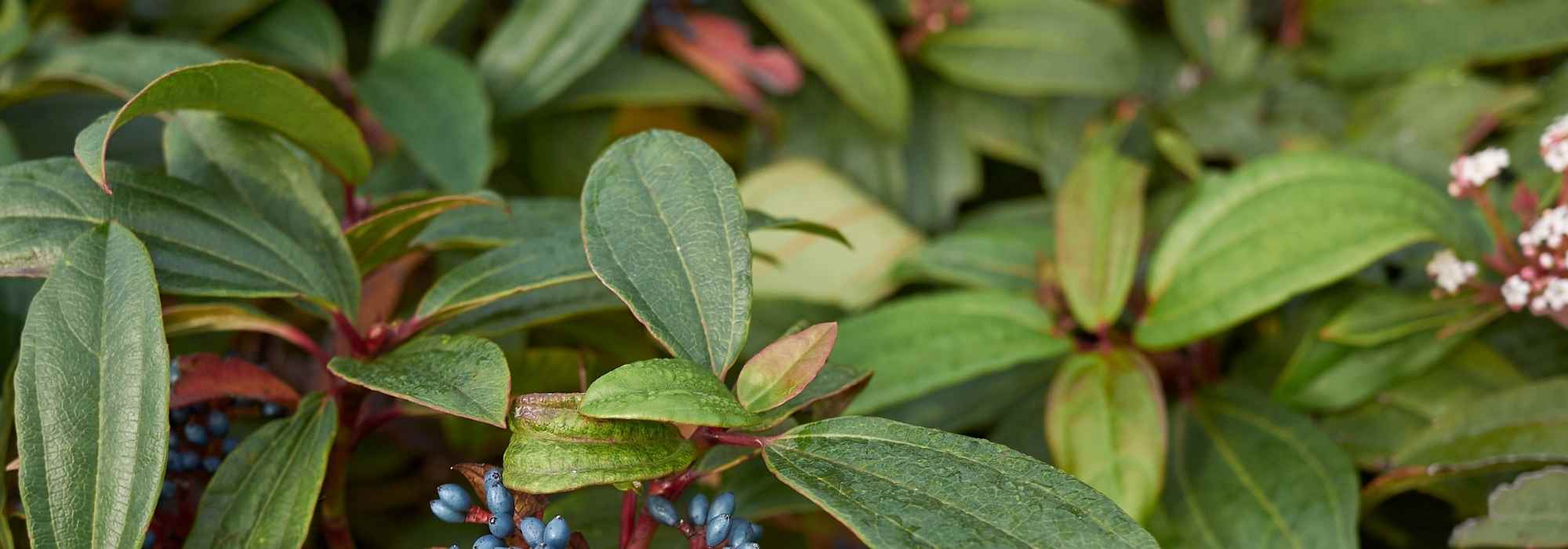
Evergreen bushes for shade
Selected according to the nature of your soil
Contents
Evergreen bushes retain their foliage in winter and have the advantage of being decorative all year round. Ideal for creating a permanent display! There is a wide range of evergreen shrubs that thrive in shade or prefer to be sheltered from the scorching sun, especially in summer. Some of them tolerate dry soils, while others prefer soil that remains cool or can grow in any soil.
Here is a selection of essential shrubs for shade, to grow according to your soil type, along with all our tips for success!
Evergreen bushes for shade that are resistant to dry soils
The Aucuba
This is the perfect bush to ensure a bright and permanent decor in shaded or difficult-to-vegetate areas of the garden. With its thick, glossy, evergreen foliage, either green or variegated with yellow, and its bright red berries, it puts on a show all year round, which is particularly appealing in the shade. It is not afraid of competing with the roots of old trees and can therefore be planted at the foot of trees. It is renowned for its ability to thrive in any soil, even in dense shade, including dry soil. Its thick foliage tolerates urban pollution and sea spray well, making it an excellent choice for both city and coastal gardens. Additionally, it can withstand very low temperatures down to -15°C, allowing it to acclimatise in almost any garden.
How to grow it:
- In any good ordinary well-drained soil, preferably not too calcareous
- As a specimen, in a hedge, or at the back of a shaded border
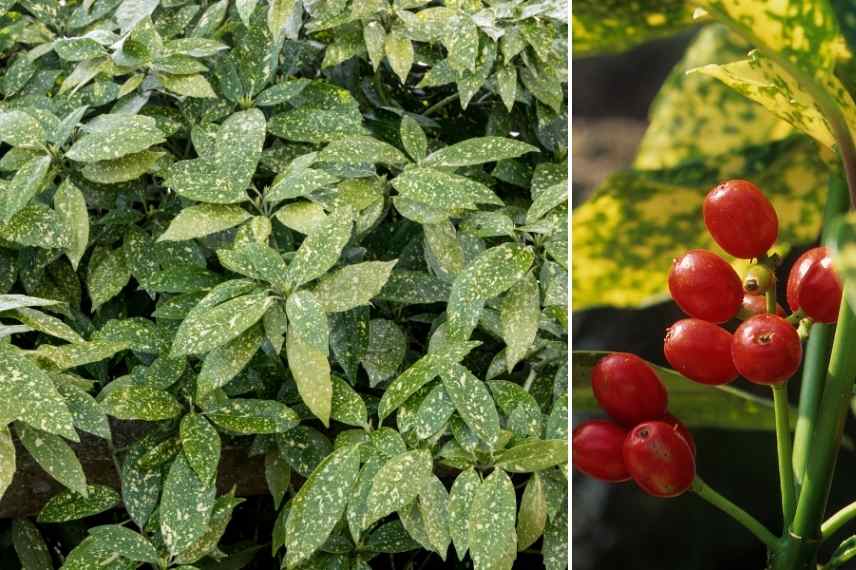
The Mahonia
Here is an evergreen and decorative bush that enjoys shade or partial shade! It thrives under deciduous trees. Its winter flowering with a mimosa fragrance in bright yellow blooms on particularly graphic evergreen foliage that takes various forms depending on the varieties: tough and spiny in Mahonia aquifolium, light and fine in Mahonia ‘Soft Caress’. The long, large compound leaves give it an exotic touch. It rarely exceeds 1.5 m in height. Very easy to grow and low-maintenance, it tolerates poor soils and, once established, copes quite well with occasionally dry soil. Hardy down to -20°C, it is a truly original bush that finds its place in our not-too-hot regions.
How to grow it:
- In light, draining, porous soil, preferably sandy, without excess moisture
- In a hedge or border, and even in a pot
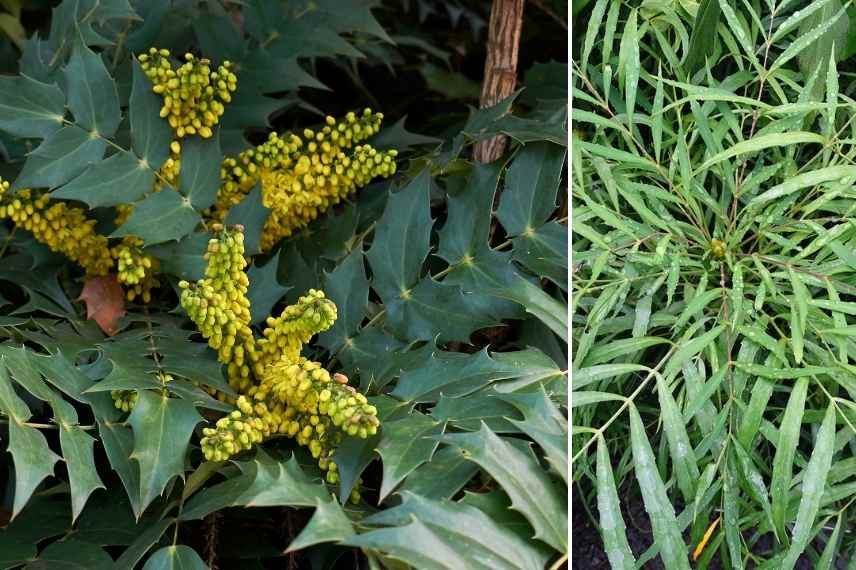
Mahonia, the spiky… and sweet version!
The Sarcococca
This is the perfect bush to fill difficult (dry soil, roots…) and shaded areas of the garden, where few plants are willing to grow. It tolerates dry shade perfectly. With its glossy, green, evergreen foliage and a delightfully fragrant winter flowering, its main representatives Hookeriana and Confusa deserve to be better known. Its moderate size, slow growth, and dense silhouette allow this bush to integrate easily into the garden, even among tree roots. It is perfect when planted under large deciduous trees. It forms a very slowly growing compact bush, more or less spreading, about 60 cm to 2 m high at maturity. Very resistant to pollution, hardy, disease-resistant, low-maintenance, and unobtrusive, it is among the easiest shrubs to succeed in the garden and can be planted throughout France.
How to grow it:
- In non-calcareous, preferably acidic, well-drained soil
- In borders, under trees, in low free hedges, or as ground cover
⇒ To learn more: Sarcococca: how to grow and prune it
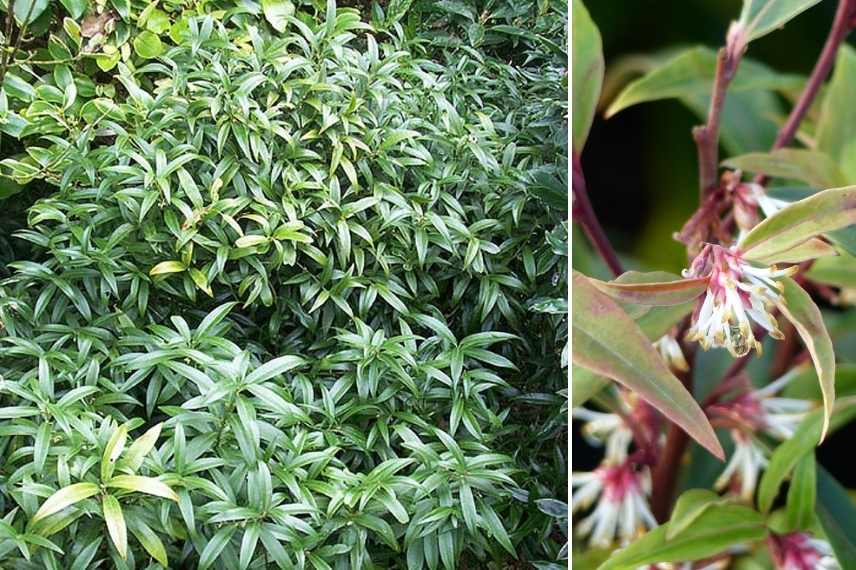
Sarcococca hookeriana ‘Humilis’ and Sarcococca hookeriana ‘Dygina’
The Myrtle (Myrtus communis)
This typically Mediterranean evergreen shrub is robust and always green! Dressed in small, tough, glossy dark green foliage that is remarkably aromatic, it thrives in a mild climate. On this dense, dark mass, a multitude of small, fragrant white flowers emerge throughout the summer. The growth habit is naturally dense and compact, it grows slowly and rarely exceeds 1.5 to 2 m in height. Relatively hardy (-10 to -12°C) in well-drained soil and low-maintenance regarding soil type, this species is essential in a dry garden. Due to its tough leaves, it withstands drought well. Accommodating, it thrives in any exposure and perfectly accepts shade in the south of our country.
How to grow it:
- In any poor, dry, and well-drained soil
- In a hedge, border, as a topiary, or in a pot
⇒ To learn more: Myrtle, Myrtus: planting, pruning, and maintenance
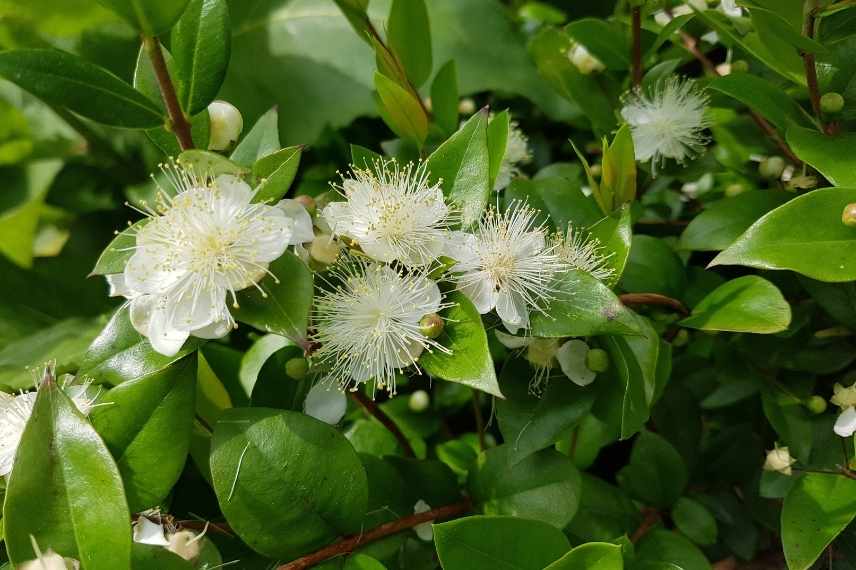 Myrtus communis
Myrtus communis
The Viburnums
The evergreen species, Viburnum davidii and Viburnum tinus (Laurier tin), allow for the creation of a border that remains green even in the middle of winter! They form bushes with dark, glossy, evergreen foliage, ranging in height from 80 cm to 4 m. They are covered with precious winter or spring flowers. The red, black, or blue berries follow, adding extra appeal. While many prefer sunny situations, these species perform very well in the shade. Laurier tin also tolerates wind and sea spray well, thriving by the seaside. Hardy down to -12/-15°C, they adapt to all well-drained soils, even very calcareous and dry in summer, and they are not afraid of competing with the roots of old trees!
How to grow them:
- Any type of neutral to acidic soil
- In a privacy or windbreak hedge, free or trimmed, at the back of a border, in woodland, or in large pots
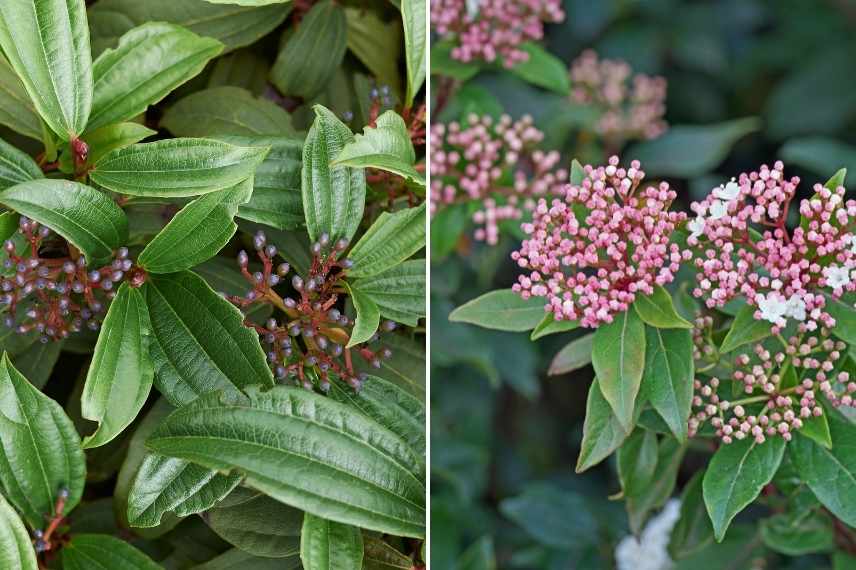 Viburnum davidii and Viburnus tinus
Viburnum davidii and Viburnus tinus
Read also
10 evergreen bushes for dry soilEvergreen bushes for shade preferring cool soil
Osmanthus
Attractive all year round with its beautiful evergreen foliage, it announces its presence by filling the air with its jasmine-scented flowers in spring or autumn. Some varieties do not exceed about 1 m in height, while others can grow up to 5 m tall. Its leaves exhibit variable appearance and coloration depending on the cultivars: smooth or spiny, resembling those of holly (Osmanthus heterophyllus), dark green or variegated (Osmanthus heterophyllus ‘Tricolor’). Quite hardy, it adapts well to all regions. Its leathery foliage also tolerates coastal spray very well. It prefers a position sheltered from scorching sun that could damage its leaves and flower buds. It appreciates regular watering during summer.
How to grow it:
- In any light, well-drained soil except very calcareous and very dry
- In shrub borders, in trimmed or untrimmed hedges, flowering or defensive, isolated or even in large pots
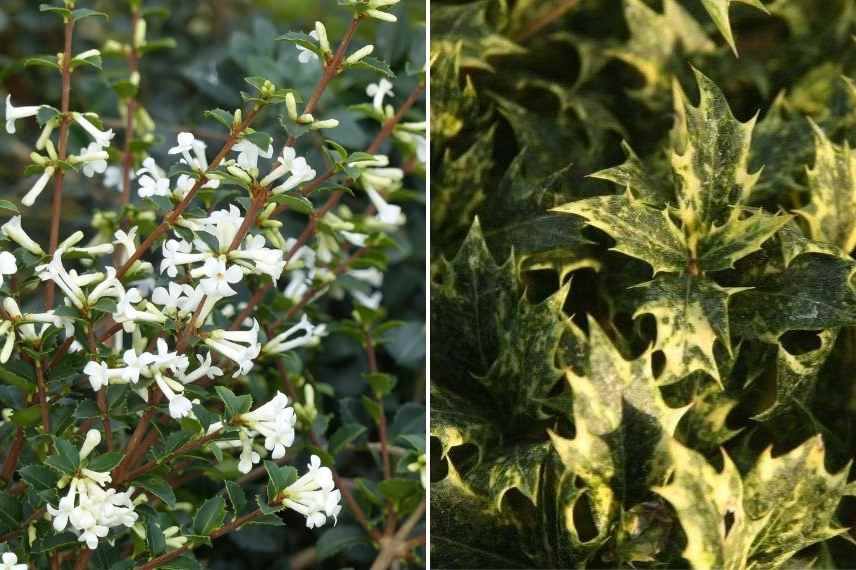
Osmanthus delavayii and Osmanthus heterophyllus ‘Tricolor’
Fatsia or Aralia
Fatsia is a beautiful evergreen shrub essential for an exotic shade garden to brighten up poorly lit, enclosed areas. With its enormous glossy, palmate leaves, green in Fatsia japonica or variegated like in Fatsia japonica variegata, measuring 15 to 30 cm wide, sometimes more, it transforms any dark area into a lush composition. Its cream-white flowers bloom in small pom-poms at the end of summer, followed by small decorative black fruits, much appreciated by birds. Despite its very exotic appearance, it is hardy down to -15°C. However, it is best to provide it with a spot sheltered from cold, dry winds that could scorch its foliage. It thrives in a climate that is not too harsh and can reach 2.5 m in all directions in the ground, slightly less in a pot.
How to grow it:
- In rather cool, humus-rich soil, preferably neutral to acidic, without excess lime
- In borders, under trees, in pots
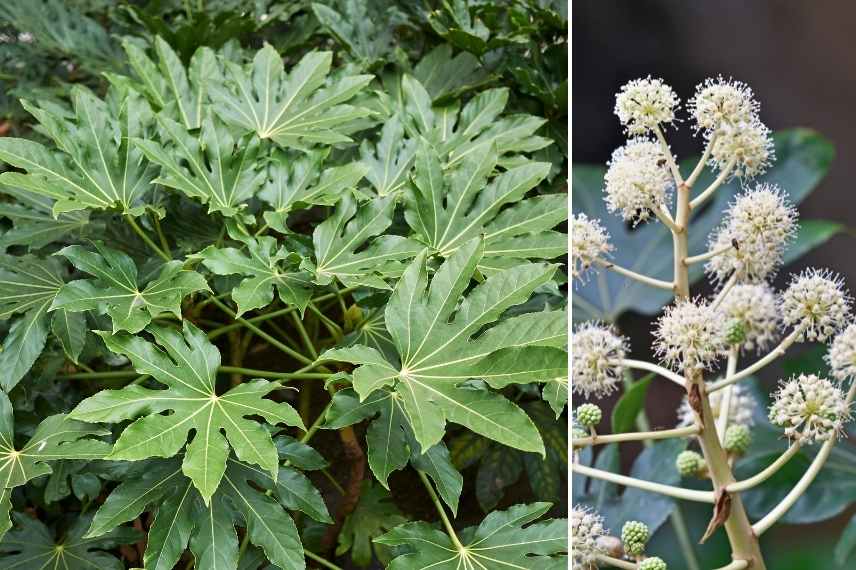
Fatsia japonica
Rhododendrons
They are the stars of shade gardens! They thrive in shade and in heather soil. Their evergreen foliage, a beautiful emerald green or variegated with yellow, glossy, serves as a backdrop for an exceptional spring flowering in varied colours and gives them a true presence in the garden throughout the year. They offer a very wide range of sizes, with shrubs sometimes climbing to 4 m in height. Versatile, they fit into all settings. They are hybrids with a broad and generous habit that always form beautiful, highly floriferous bushes. They are sensitive to summer drought and prefer cool soils where water never stagnates: plant ground covers like heathers at their feet to keep the soil cool during hot periods. Vigorous and very hardy (down to -25°C), they grow throughout France, except perhaps in the Mediterranean climate, which is too arid, still preferring a cool, rainy climate.
How to grow them:
- In light, acidic soil, free of lime, cool but well-drained
- In isolation, in free hedges, in groves, in borders or in pots
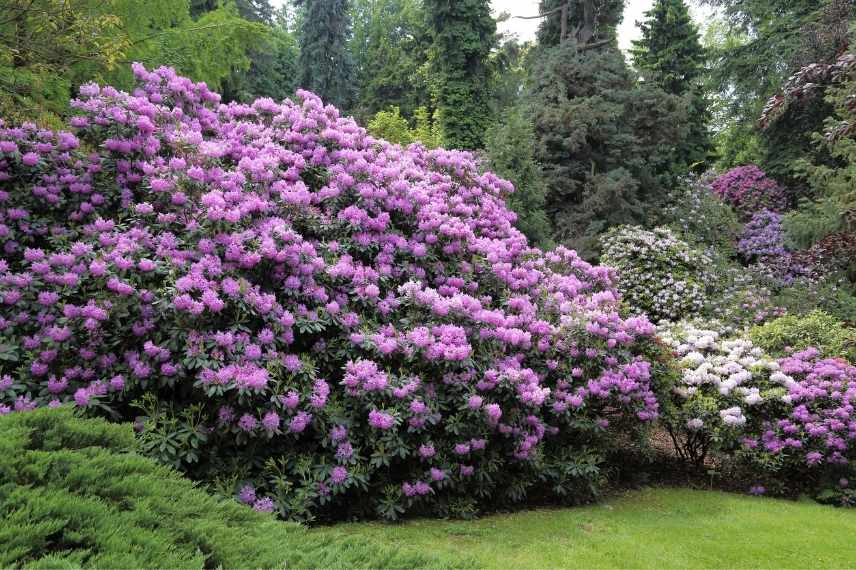
Rhododendrons
⇒ Read more: our complete guide dedicated to rhododendrons and azaleas
Camellia
Another essential evergreen shrub to brighten up a garden in the dreary season. Growing naturally in the forest, it prefers shade! It proves to be perfectly hardy in a position protected from cold, dry winds. Its slow growth and compact habit, rarely exceeding 1.5 m, make it an ideal subject for a small garden or container planting. All camellias have evergreen, glossy foliage and bloom in the “bad season” in winter like Camellia japonica and Camellia x williamsii, or in autumn like Camellia sasanqua. They then become literally covered in simple, semi-double, or double flowers in very varied pastel or intense colours.
How to grow it:
- In soil rich in humus, but light and slightly acidic, devoid of lime
- In free hedges, in isolation or in pots
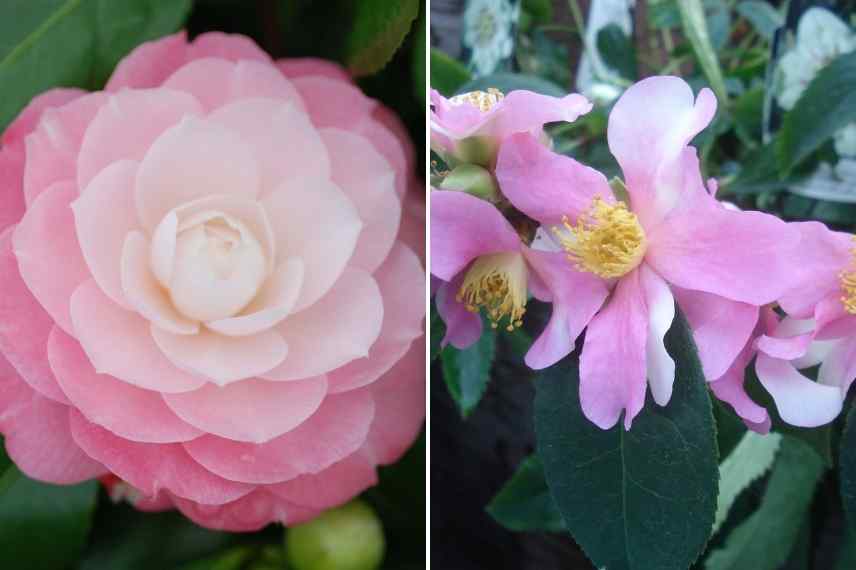
Camellia japonica ‘Sweet Olive’ and Camellia sasanqua ‘Yume’
Discover other Evergreen shrubs
View all →Available in 0 sizes
Available in 1 sizes
Available in 1 sizes
Available in 1 sizes
Available in 1 sizes
Available in 1 sizes
Available in 2 sizes
Available in 1 sizes
Available in 1 sizes
Available in 1 sizes
Evergreen bushes for all-terrain shade
The Pyracantha or Firethorn
This is a vigorous, bushy, evergreen bush that thrives in any conditions! It features very bright, leathery foliage, slightly dentate, in a vivid glossy green that highlights an abundant display of red, yellow, or orange fruit in autumn. It is among the most decorative shrubs during winter! It adapts very well to shade in warm climates. This is the ideal shrub for creating medium to tall defensive hedges! Perfectly hardy (between -15 and -28°C), it withstands urban pollution, wind, cold, and heat, and thrives throughout France.
How to grow it:
- In any type of soil, even calcareous or poor
- In defensive hedges, slopes, or topiary
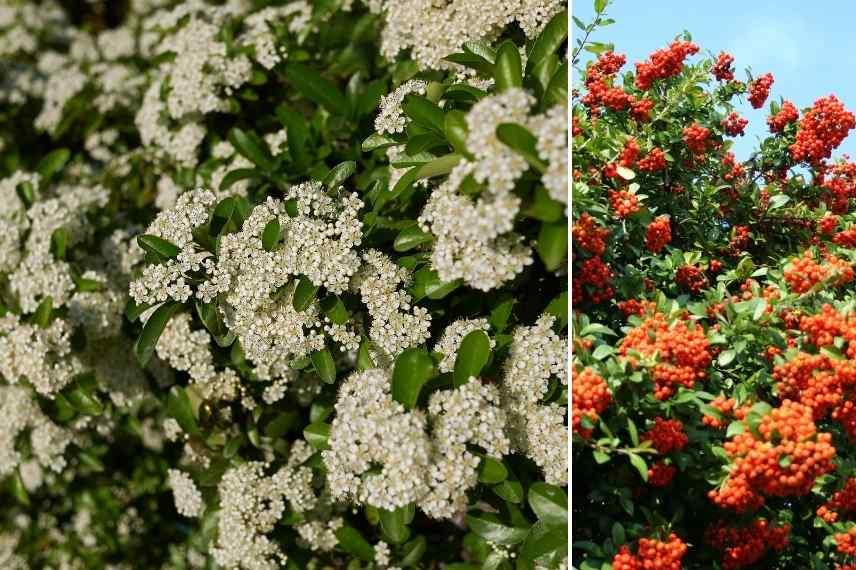
Pyracantha, flowering and fruiting
The Common Yew, Taxus baccata
A superb conifer with dense, evergreen foliage, usually dark green, although there are also varieties with yellow leaves, such as Taxus baccata ‘Semperaurea’. It tolerates both sun and dense shade, acidic as well as calcareous soils, and is not afraid of cold, strong winds, or air pollution. This is an all-purpose shrub. It is ideal for forming topiary or for creating dense, evergreen hedges.
How to grow it:
- All types of soil
- In isolation, in hedges, in a large rockery, or in a border, in pots
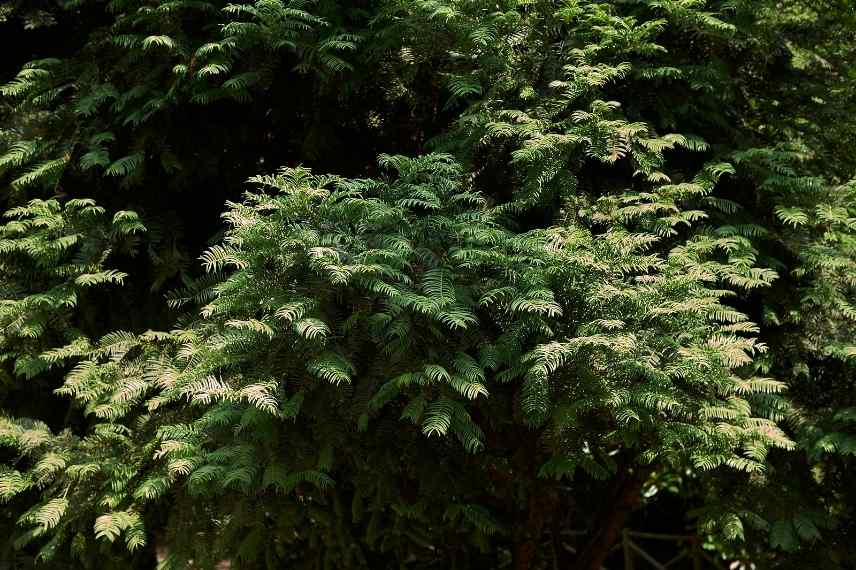
Common Yew
- Subscribe!
- Contents
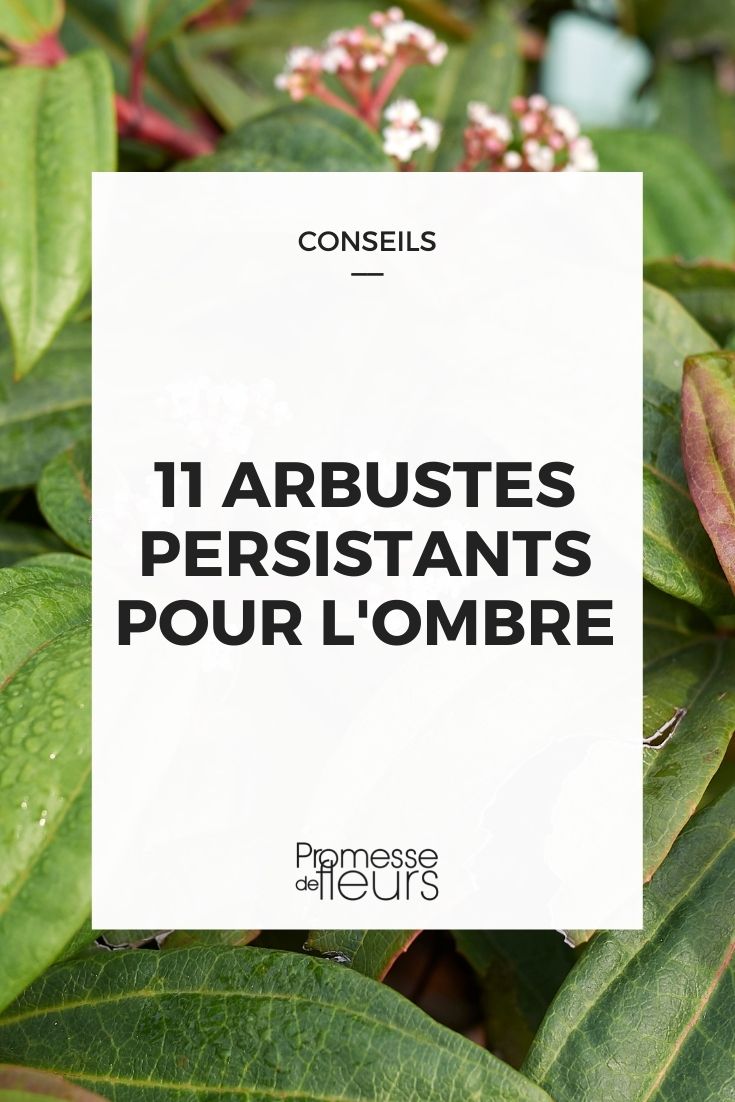































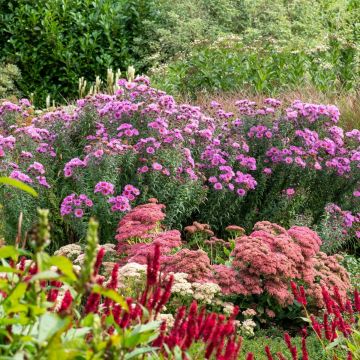

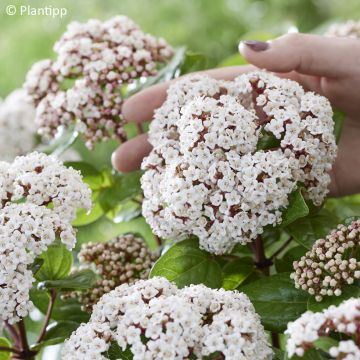
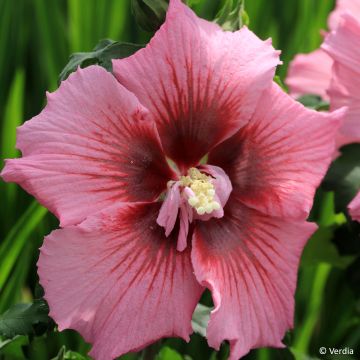
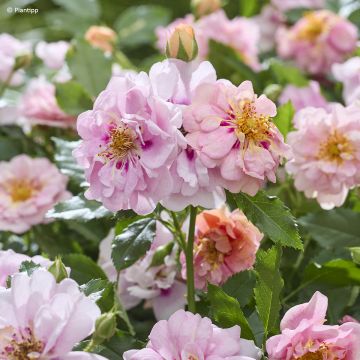
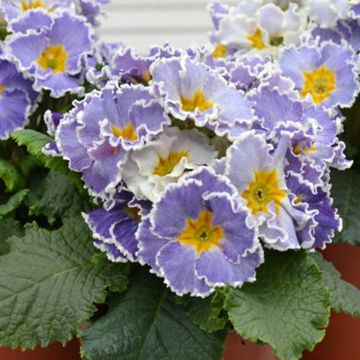
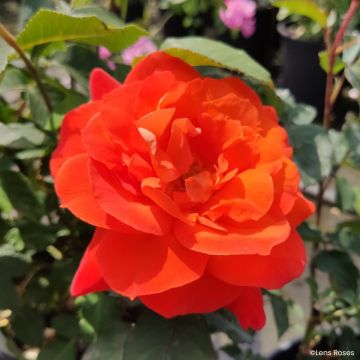
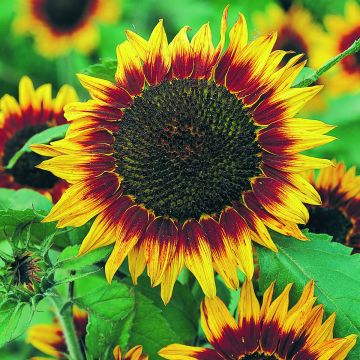
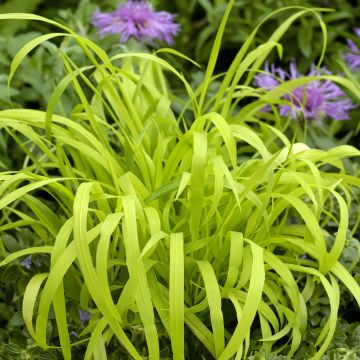
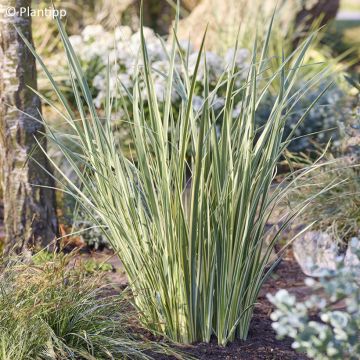
Comments